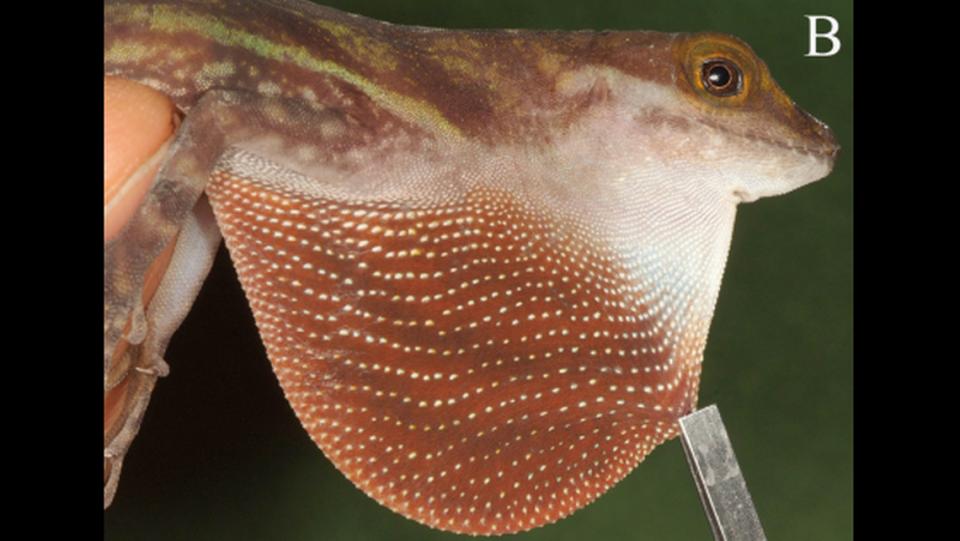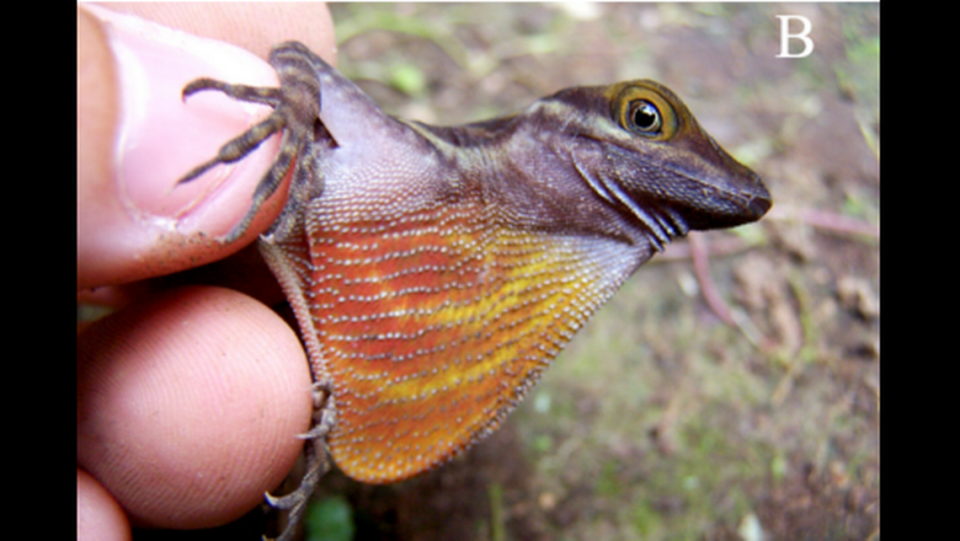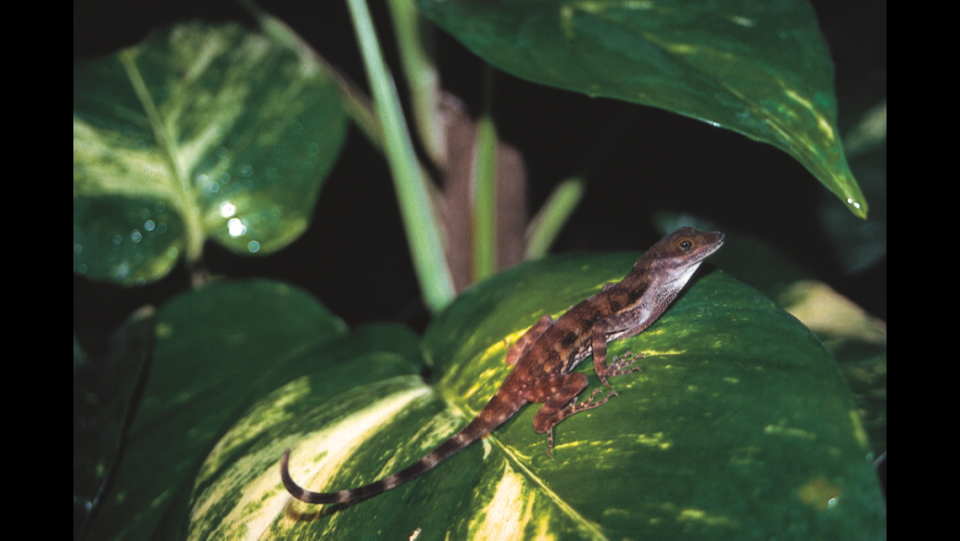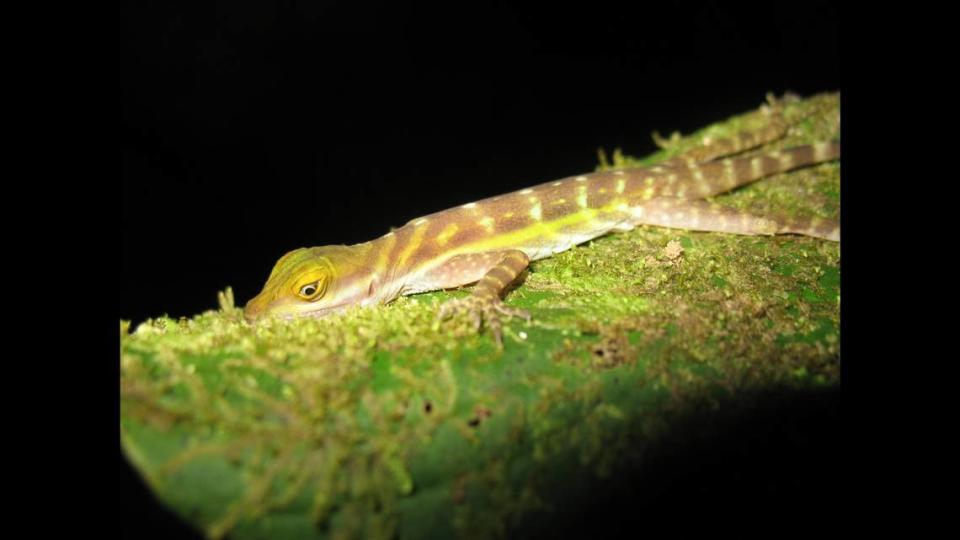Tiny creature that likes to snooze by waterfalls in Costa Rica is new species. See it
Visit any streambed in Costa Rica’s San José Province, and you’re sure to find an abundance of lizards known as anoles scampering across and between rocks, dozing on mossy patches or lounging among leafy vegetation.
From a distance, the creatures appear similar in size and color. But agitate a male lizard, and a glimpse of their dewlap — or throat skin — and you’ll quickly learn that there are a range of species of the small animals.
In the 1970s, Douglas Robinson gathered a collection of semiaquatic anoles from Pursical — about 40 miles southwest of San José. Researchers quickly noticed something peculiar: The creatures had a unique colored dewlap, different from all known semiaquatic anoles.
Now, after more than a decade of research that included collecting more samples of the lizards from western Costa Rica, scientists say they’ve identified two new species of semiaquatic anoles in the region, according to a study published July 25 in Zootaxa.
The “cryptically colored” creatures were found in streambeds and were distinguished by the coloring of their dewlaps, among other small differences, the study said.
Here’s what to know about the newly discovered animals:
Vividly colored throats
The two new species — Anolis robinosi and Anolis riparius — are distinguished by their different colored dewlaps, according to the study.
A. robinosi, named after Robinson, has a unique chocolate brown and brick red streaked throat, scientists said. Photos show the creature’s dark throat skin covered in the “ill-defined” streaks.
The species is the only known kind of semiaquatic anole with this coloring, researchers said.

A. riparius has a more brightly colored dewlap, with a mix of red, yellow and orange coloring, photos show. The creature’s dewlap is similar to another species, A. aquaticus, but variations in scale size differentiate the two species, according to the study.

Eye-catching striped skin
Aside from their colorful throats, the two species have similar patterned skin, scientists said.
Both species have olive to chestnut brown backs covered with olive-green bars that extend down their backs and tails, according to researchers. They also have a cream-colored line on their sides.
The creatures have small green colored spots on their backs, and their limbs have pale green to yellowish stripes marked by small spots, the study said.


The species are similar in size, too, researchers said. A. robinosi ranges from about 0.9-inches to 2.9-inches long, while A. riparius ranges from about 1.2-inches to 2.8-inches long.
Streambed habitats
The species also have similar habitats.
Researchers said they identified A. robinosi spending their days on bare rocks and boulders near streams with dense tree cover. At night, the creatures sleep on mossy patches or boulder vegetation, typically in the “splash zones” of waterfalls.
A. riparius similarly lives in and around streams, perching on rocks and boulders, scientists said. If the creatures are scared, they will jump into nearby water or crawl between cracks in the rocks where they are perched. The lizards sleep on moss mats, fern fronds and other leafy vegetation near waterfalls, but they have sometimes been found sleeping on vertical rock walls near waterfalls as well.
Distribution in western Costa Rica
A. robinosi lizards are found within the tropical wet and humid premontane forest life zones in the San José Province, especially in the forests of the Río Candelaria basin and the foothills of the Montañas de Turrubares, the study said.
A. riparius find their homes in the lowland and premontane tropical wet forest life zones, and they are especially known from the forests of the Pacuar, Guabo and Savegre river basins, according to experts.
The San José Province is on the western coast of Costa Rica.
Angler thinks he spots sea turtle — then has ‘once in a lifetime’ glimpse of creature
Tiny new species is named after ‘Lord of the Rings’ character for good reason. See it
Mysterious creature with big eyes and bushy tail found in Australia. See rare species

